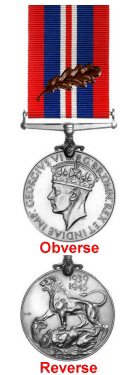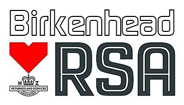MENTION IN DESPATCHES
The system of mentioning specific acts of gallantry or distinguished service under fire by senior officers of their juniors, in despatches, has been practiced for many years. The British had no emblem to signify such mentions until after the First World War when, in 1920, King George V authorised the wearing of a multi leafed oak emblem in bronze on the ribbon of The Victory Medal for that war, or, if The Victory Medal was not granted, on the ribbon of The British War Medal.
In 1943 King George VI authorised the wearing of a single leafed oak emblem for those mentioned in despatches during the Second World War. Originally worn on the jacket where medals would be worn, it was, after the issue of The War Medal 1939-45, authorised to be worn on the ribbon of that medal.
Emblems for Mention in Despatches in other campaigns are worn on the appropriate campaign ribbon or, if no medal is granted, on the jacket after any other ribbons. Only one oak leaf may be worn on any one ribbon, irrespective of the number of mentions.
For awards made since 1994, the emblem is a silver oak leaf.
Awards of Mention in Despatches to members of the New Zealand Army numbered fifty seven during the Boer War, 1,434 during the First World War, 2,082 during the Second World War, forty nine during the Korean War, thirty during the Malayan confrontation, eight during the Borneo confrontation and twenty seven during the Vietnam War.
Awards to members of the Royal New Zealand Air Force numbered 572 during the Second World War and three during the Vietnam War.
Members of the Royal New Zealand Navy were awarded 197 during the Second World War and eighteen during the Korean War.
Click on thumbnail
for larger image

![]()

![]()




